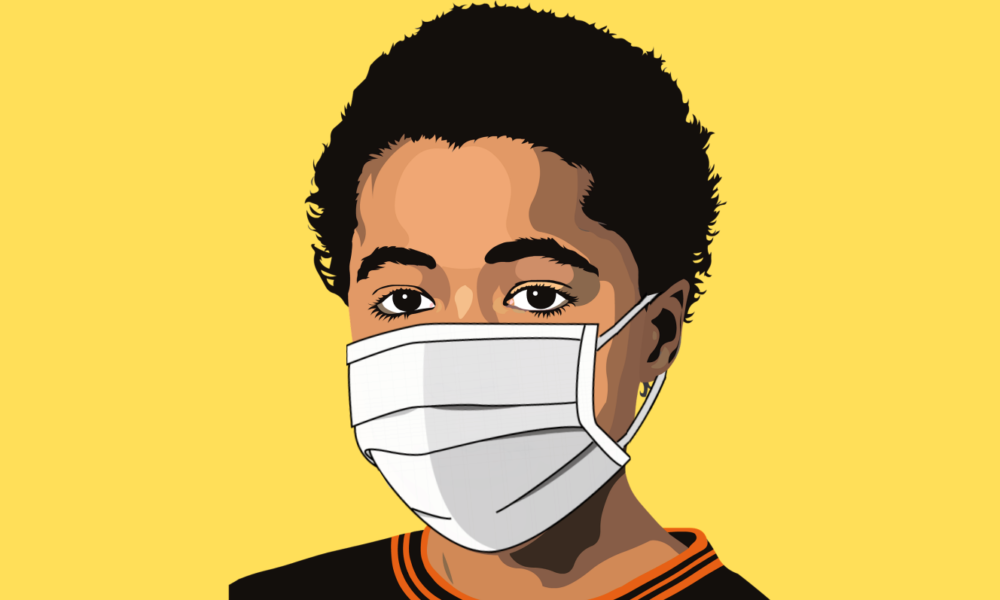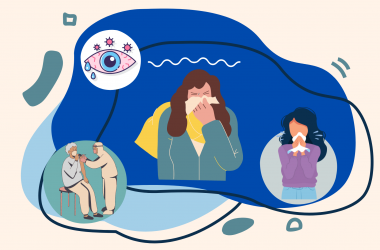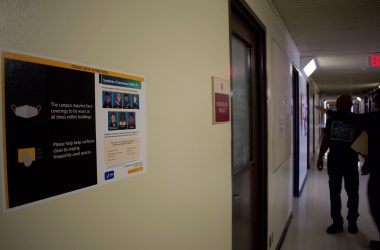The universal impact of COVID-19 is undeniable as death tolls climb and communities isolate.
The World Health Organization and the White House reiterate that this is a priority issue for all and preach solidarity in the effort to rid the world of this virus.
Imagine if society took the same stance on ending racism.
Although COVID-19 is a unique illness that has no known cure, racism is a chronic illness that has been perpetuated by the United States government for hundreds of years.
It is important for people to understand that COVID-19 perpetuates anti-Blackness.
With community members more scared and suspicious than ever, Black and Brown people are more vulnerable than ever. We are either more likely to die from COVID-19 due to structural racism or more likely to be criminalized due to structural racism.
Many preserve the dichotomy of racism and COVID-19 being separate occurrences. However, the overlap of these realities prove to be devastating. Rep. Alexandria Ocasio-Cortez tweeted that the connection between racism and the COVID-19 death tolls cannot be ignored.
COVID deaths are disproportionately spiking in Black + Brown communities.
Why? Because the chronic toll of redlining, environmental racism, wealth gap, etc. ARE underlying health conditions.
Inequality is a comorbidity. COVID relief should be drafted with a lens of reparations.
— Alexandria Ocasio-Cortez (@AOC) April 3, 2020
“COVID deaths are disproportionately spiking in Black + Brown communities,” Ocasio-Cortez wrote. “Why? Because the chronic toll of redlining, environmental racism, wealth gap, etc. ARE underlying health conditions. Inequality is a comorbidity.”
Americans now experience trepidation when leaving their homes to buy groceries or even to simply get some fresh air.
Yet, this sort of anxiety isn’t new for marginalized people. The experience of walking out the front door and fearing it will be the last day you make it beyond that threshold is constant for Black and Brown people.
This visceral feeling of fight or flight with every step represents what it means to live in a society that deems you a criminal, always marked for death.
Even before the coronavirus pandemic, many went out of their way to avoid contact with Black people. Blackness has been historically met with contempt, fear and violence. Yet, the greatest ills of society are formulated by structural racism.
According to Newsweek, African Americans comprise 70% of coronavirus deaths in Louisiana despite only being 33% of the state’s population. This is a statistic mirrored across America in large cities such as Chicago.
The correlation between health and economic problems in neighborhoods of color and the COVID-19 death tolls is undeniable. Predominately Black residential areas are more likely to be near toxic refineries and surrounded by food deserts, and come from multiple income families that are still living beneath the poverty line.
Environmental racism sets the groundwork for people of color to have higher rates of asthma, diabetes, heart disease, depression, anxiety, etc.
Prior to COVID-19, the federal government refused to take responsibility for the structural violence perpetuated on these communities, and this pandemic only provides more fuel to continue redlining. Thus, relegated communities are made more fungible and socially dead by the pandemic.
Even when Black people try to protect themselves through the use of do-it-yourself face coverings from a virus that has disproportionately affected their communities, there is still a fear that because of racial bias, they may become targets of police brutality. There seems to be no way to win; Black people run the risk of dying either way.
“I’m a [B]lack man in America,” Aaron Thomas wrote in The Guardian. “Entering a shop with a face mask might get me killed — For me, the fear of being mistaken for an armed robber or assailant is greater than the fear of contracting COVID-19.”
The Black community must also come to terms with our own in-group cultural mindset surrounding healthcare. The medical industrial complex has historically been an institution that has practiced bio-political oppression against Black bodies. Because of medical apartheid, there has been an understandable mistrust in the system.
There is a dangerous lack of accessibility to COVID-19 testing within Black and Brown communities. According to Dr. Uché Blackstock, whose work centers on inclusivity in medicine, marginalized people are being denied testing.
“Although the Families First Coronavirus Response Act, passed on March 18, covers all uninsured people, Black people have the highest rates of not being insured,” Blackstock said. “With COVID-19 testing, it becomes painfully obvious who in reality can access testing and who cannot.”
There is also a fear of trusting a medical field that has historically brutalized Black and Brown bodies. How can anyone tell marginalized people to trust the same medical system that has used them for experimentation for decades?
It is plain to see that the government and American society have failed people of color once again.
However, I know one thing is for sure: If marginalized communities can survive slavery, genocides and colonialism, I believe that as a community we will overcome this.




